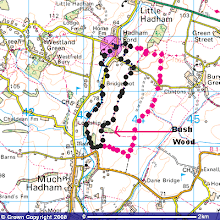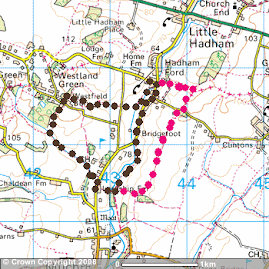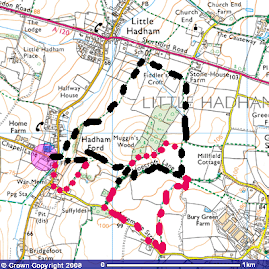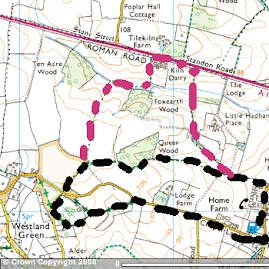Yesterday, I set the trap on wasteland near Westland Green, an old disused farmyard which holds horse chestnut, elder, sycamore and plenty of nettles and thistles. I left the 15W Heath trap running whilst I returned home to grab some late supper before heading out.
Firstly I went to Millennium Wood for a quick wander through the wood, netting with a head torch as I went. Plenty of Pleuropyta ruralis coming up from nettles, but not too much of note so I returned to the trap at 11p.m. The plan was then to move on to the adjacent golf course to do more netting, but so much was coming to the trap that I began potting those roosting on the sheet.
Clearly some moths that were new for year and several that I was fairly sure I hadn't recorded before, so I stayed and potted until all the pots were in use.
 |
| Argyresthia goedartella: new for the year. |
I then listed those I knew and put the rest to one side. Off on to the golf course some 200metres away and not in sight of the trap, where I released those I knew. I carried on with this process until midnight, whereupon I emptied the trap and, again, potted those I was not sure of. This was, in total, around 40 moths which I then took down to the shed and began identifying.
Coleophora and Cnephasia were labelled as such and are ready to be dissected to ascertain specific species. One or two I was not 100% on, so these too will be passed on for confirmation.
Once this process was completed I began to pot all those roosting on the fence and perspex of the garden Skinner trap. These were duly identified and released several hundred yards along the village lane. I carried on doing this until 3.30 when I was flagging, so off to bed.
 |
| Ypsolopha scabrella: new for the year. |
Not wanting to lose those in the trap, I returned at 5.15a.m and emptied those inside and set about going through the new pile of pots, completing the process at around 8.30. Time for a coffee before beginning recording them on the laptop and in my record book, the official record format. Several new moths were photogrpahed and the whole process was over by 12.15, just in time to pen this report.
 |
| Hypsopygia costalis |
A really good night's mothing in hot, balmy conditions where the temp never dropped below 22C all night. Although there was a bright full moon, the number of moths in the lanes coming to the car headlights as I drove home was staggering.
In total: 301 moths form the 3 sites were identified and recorded.
Millennium Wood: 27 of 16 species
Alder Wood: 118 of 48+ species
Garden: 156 of 70 species.
 |
| Amblyptilia acanthadactyla minus a couple of legs |
The List:
Little Hadham Parish moths
19.07.16
Trapped between 9.15pm and 12.30am
Traps: Heath 15W actinic, 125W Skinner as well as headtorch and net.
Millennium Wood: Micros
- Anania perlucidalis
- Notocelia uddmanniana
- 4 Pleuropyta ruralis
- Eucosma obumbratana
Millennium Wood: macros
- 5 snout
- 3 July highflier
- clouded border
- Light emerald
- Dingy footman
- Common emerald
- 2 Shaded broad bar
- Riband wave
- Drinker
- Rufous minor
- Small fan foot wave
- 2 Green pug
 |
| New for parish records: Mullein wave |
Alder Wood: disused yard with Heath 15W Actinic: Micros
 |
| New for the year records: Epiblema foenella |





























































































